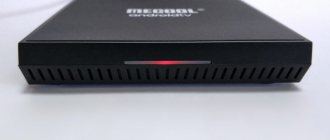Hi all! The combination of processor and video card is the basis of any gaming or work computer on which graphics will be processed. This combination must be selected first and the system must be formed on its basis. It is also highly recommended to select the CPU and GPU so that they are ideally combined with each other. This approach will allow you to maximally avoid situations where one of the components cannot operate at full capacity due to the lack of performance of the second. Today I have selected for you the top 10 best, in my opinion, combinations of processors and video cards.
AMD Ryzen 5 3500 and NVIDIA GeForce GTX 1660
- Socket: AM4
- Lithography: 7 nm
- Number of cores: 6
- Number of threads: 6
- Base clock frequency: 3.6 GHz
- Turbo frequency: 4.1 GHz
- Free multiplier: yes
- Integrated graphics: no
- TDP: 65 W
- Base Clock: ~1530 MHz
- Turbo clock purity: ~1785 MHz
- Ray tracing: no
- Video memory type: 6 GB GDDR5
- Additional food: yes
Now I suggest you look at the red-green combination. The Ryzen 5 3500 looks good in budget builds, despite the fact that it is no longer a fresh stone. Six cores run all modern games at ultra settings, with the exception of CPU-intensive projects. And the seven-nanometer technical process makes the stone as cold and economical as possible.
The NVidia GeForce GTX 1660 video card still produces more than sixty frames even in heavy games at ultra graphics settings in FullHD. And in some projects you can even try QuadHD resolution. A six-GB video buffer will allow it to remain relevant for a long time.
| FullHD Ultra | Battlefield V | The Witcher 3 | Far Cry New Dawn | Shadow of the Tomb Raider |
| AMD Ryzen 5 3500 and NVidia GeForce GTX 1660 | 77 | 81 | 83 | 68 |
What to consider when choosing a video card for a processor
Let's start with the purpose of the components using games as an example:
- The processor is responsible for processing the game world. This includes the geometry of stationary/dynamic objects, their damage/deformation, character physics, artificial intelligence, audio playback.
- The video card processes and displays images on the screen: applying textures, calculating/rendering shadows, lighting. Additional load is provided by screen resolution, the inclusion of anti-aliasing and other effects.
The responsibilities of the CPU and GPU may differ depending on the specific project. In addition, the processor is responsible for maintaining the operating system and background programs.
Now let's consider what will happen if one of the components turns out to be more powerful.
Powerful processor and weak video card
The processor fits the information collected about the game world into 1 frame and transfers it to the video card for rendering. The more powerful the CPU, the faster and more frames it can process and prepare.
On the frame received from the processor, the video card superimposes a picture with the above-mentioned textures, lighting, and effects. If the GPU cannot keep up with the CPU, frame drops (FPS) occur. In this case, you will have to lower the graphics settings and reduce the resolution.
The processor power should be enough to run the game and run the operating system simultaneously.
Powerful graphics card and weak processor
In the opposite situation, a powerful video card will display as many frames on the screen as a weak processor can prepare for it. At the same time, due to excessive load on the CPU, microfreezes may appear. Stopping background programs will help improve performance slightly.
With a weak CPU, a powerful video card operates at 30-70% of its maximum power.
No video card, there is a graphics core
Graphics cores are integrated directly into the processor. In this case, there will be no problems with compatibility, since the chip developers (Intel, AMD) are responsible for selecting the video core. The advantage of this solution is the direct transfer of frames from the processor to the graphics core without an intermediary in the form of a motherboard. Due to the nature of production, integrated solutions are significantly inferior to their desktop counterparts.
All single-chip systems installed in smartphones and tablets use integrated graphics.
General knowledge
In my opinion, the first step is to understand a few general concepts that you need to know in principle. The motherboard is designed for a specific series of central processor and you need to check compatibility before purchasing.
As a rule, this fact is important. You may be asking: how to match the processor to the motherboard, video card and RAM? My answer: Each board model supports a specific series of processors and, in most cases, one type of RAM. If your CPU fits the board, it will also fit the memory installed on it. On modern platforms, the RAM standard is DDR4.
Video cards are connected to a PCI-Express slot, which is found in almost all board models, with the exception of cheap office solutions.
We'll look at how to find out all the supported motherboard interfaces below.
Above is the current socket for AMD processors, which is labeled AM4.
For example, if you have a computer based on an AMD processor. Let's take the AMD FX 6300 as an example. The socket of this CPU is AM3+. This means that all processors that were released for this socket will fit here and will fit your board and accordingly you can buy a more powerful AMD FX 8320 here.
Case Study
To make the article as useful and clear as possible, it is worth considering compatibility issues using a practical example. There is the following gaming build (on an old platform, but after a recent upgrade - the video card was replaced with a powerful modern NVIDIA RTX 2070 SUPER):
- Processor: Intel Core i5 2500K
- Cooler: Deepcool Lucifer
- Motherboard: ASUS P8 P67 LE
- RAM: Kingston HyperX 1866 MHz, 4 modules of 4 GB
- Video card: NVIDIA RTX 2070 SUPER
- SSD and hard drives: SATA SSD Samsung 860 Evo 500 GB,
2 x 4 GB WD Red hard drives
- Power supply: Chieftec 650W
- Case: Thermaltake Element T
Since the CPU has become a clear bottleneck in this configuration, limiting the frame rate in current demanding games, it needs to be replaced. Since the LGA 1155 socket is very outdated, you will have to change not only the processor itself, but also the motherboard, as well as the RAM.
The video card, SSD, hard drives, power supply and case remain, there is no need to change the cooler - you just need to clean its base from the remnants of the old thermal paste and apply new one to the cover of the purchased stone.
What specifically can you recommend? For the build to remain relevant for several years - at least overclockable six-core processors, that is, either an Intel Core i5 9600K and a Z390-based motherboard, for example, MSI Z390-A PRO, or an AMD Ryzen 3600 and a B450-based MP - for example, ASRock B450M PRO4-F .
As for RAM, it is better to take 2 modules of 8 gigabytes each to activate dual-channel mode, since even in this case, 2 more slots remain free. If the board had only two memory slots, it would be optimal to take one 16 GB stick to facilitate further upgrades.
In the current conditions, for example, the G.Skill AEGIS F4-3000C16D-16GISB kit at 3000 MHz is suitable. By the way, ideally you should immediately aim for an eight-core processor - for games it’s an Intel Core i7-9700K, but if you also plan to work with resource-intensive programs on the computer, then you can take Ryzen.
Cooling
Choosing a cooling system
When your system overheats, it fails, and the same happens with the video adapter. In addition, this may compromise the integrity of the motherboard, so you need to take time to select a cooling system, which comes in several types:
passive - only the heatsink works, nothing is attached to the card itself. This adapter does not have high performance, so it does not require a serious cooling system;
Passive cooling system
active - radiator, fan, heat sink pipes - a complete system. This type of cooling is the most effective. Can be used in adapters of any type;
Active, complete cooling system
turbine - an active option using a turbine that draws in air. This turbine is in a massive housing that is attached to the video card. This type is installed on powerful cards.
Turbine cooling system for powerful video cards
Find out the material from which the blades and walls are made. A reliable option is copper or iron. For video cards that get quite hot, metal blades are best suited.
Dimensions
If your motherboard is not large, you should stick to buying small graphics cards. Larger sizes may simply not fit into the computer case or completely bend the board.
Very small video cards usually do not have a cooling system. Dimensions need to be clarified with consultants or on the manufacturer’s website, since there is no specific dimensional division.
We stick to the average dimensions of video cards
It may happen that, due to the cooling system, the purchased video card will close the connectors of the motherboard necessary for operation, so it is still worth paying attention to the dimensions. The width depends on the number of connectors
Regular models have one row of connectors
The width depends on the number of connectors. Conventional models have one row of connectors.
A little about the energy efficiency of the graphics adapter
Sometimes power supplies and motherboards are simply not capable of supporting the required power or are not equipped with special connectors for connecting power to the required video card. If the graphics editor is unsuitable due to significant energy consumption, you can install it, but it is unlikely that you will be able to achieve a high level of performance.
The energy consumption of video cards belonging to one or another class looks like this:
- Primary class - no more than 70 W. Cards of this class will work without problems with any power supply and motherboard;
- Middle class - in the range from 70 to 150 W. Not all components are suitable for this;
- High performance cards – up to 300 W. In this case, you need a specialized motherboard and power supply that will be adapted to the requirements of gaming devices.
Method one: “Collective farm”
Just as your dad calculated your ideal weight using the uberquantum formula “height minus one hundred,” advanced gamers also have their own folk approach. Its essence is that the cost of the processor in rubles must be multiplied by 1.6 (no, not by Counter-Strike). The resulting amount will be the approximate maximum price for the video card.
Thus, for example, it turns out that for a “stone” for 8,000 rubles (Intel Core i3-6100 or AMD FX-6350), a “video” of thousands for 13-14 rubles (GTX 1050 Ti or GTX 960) is best suited. Which, judging by tests on the Internet, is quite close to the truth. GTA 5, as one of the most highly optimized games, has an excellent indicator here:
Pay attention to the percentage counter in the GPU column in the video above; its lower bar just indicates how much the video card opens. In this case it is 66%. It turns out that the GTX 1050 Ti (or approximately equal in power to the GTX 960) will be too much for the same i3-6100. But the GTX 950 or GTX 1050 (without Ti) is already the same.
Ability to support multiple video cards
Motherboards of medium and large sizes are equipped with several slots designed to connect video cards. As a rule, their number is no more than 4 units, but in specialized computers there may be a little more. In addition to the presence of free connectors, you should make sure that the video cards can function in conjunction with each other. To do this, you need to take into account the following rules:
- The motherboard must support the functioning of several video cards in conjunction. Sometimes it happens that the required connector is present, but the motherboard supports the functioning of only one adapter, while the “extra” connector is delegated only a spare function;
- All video cards must be manufactured in accordance with a single standard - AMD or NVIDIA . Otherwise, they will not be able to interact with each other, which may cause a system failure;
- Graphics cards must also have special connectors for connecting other adapters to them . Otherwise, it will be impossible to achieve increased productivity. If the cards have only one such connector, you can connect only one adapter, and if there are two inputs, the maximum number of additional video cards reaches 3, plus the main one.
There is one more key rule related to the motherboard - it is necessary that there is support for any of the video card technologies - Cross Fire or SLI. The first is the brainchild of AMD, but the second is the pride of NVIDIA. Often, only one of them is supported on motherboards.
Therefore, if you have an NVIDIA adapter and you want to purchase an additional card made by the same company, but the motherboard only supports AMD communication technology, you will have to replace the main video card with a similar one from AMD and purchase another one made by the same company.
It doesn’t matter what connection technology is supported by the motherboard - one video card from any manufacturer can function uninterruptedly, however, installing two cards at once can lead to problems.
When purchasing a video card, you need to compare all the data on the power supply, board and central processor with the recommendations that are generated for a specific model. In addition, it is necessary to purchase those models that have the longest warranty, since this element of the computer is constantly subject to significant loads and can become unusable at any moment.
Now you know how to match a video card to the motherboard and processor. It is worth noting that on average the warranty period ranges from 12 months to two years, but can be longer.
Greetings to regular readers of my blog, as well as those who came here by accident! If you are one of the latter, I advise you to subscribe to the newsletter to receive timely notifications of new posts.
p, blockquote 1,0,0,0,0 —>
Here I regularly publish useful materials on computer hardware and everything related to it.
p, blockquote 2,0,0,0,0 —>
In today's publication we will look at how to choose a video card for the motherboard and processor. This is an instruction for “dummies”, in which I will try to present everything as simply as possible.
p, blockquote 3,0,0,0,0 —>
Video memory and bus width
Today, video cards on the market have only 4 types of memory: GDDR3, GDDR5, GDDR5X and HBM. The last type is a new development by AMD and Hynix. In terms of performance, HBM significantly exceeds previous generations of GDDR5 and GDDR5X, and also consumes less power.
Almost all budget video cards are equipped with GDDR3 memory. This type has the lowest performance, the frequency of which does not exceed 2000 MHz. It is not recommended to choose a video card with a frequency of less than 1600 MHz, as it will not handle even weak games, and you can completely forget about watching online movies in good quality.
GDDR5 is the most popular option. Most video cards, including budget ones, are equipped with it. Its frequency ranges from 2000 to 7000 MHz. While more expensive adapters use GDDR5X with a frequency of 7000 to 10000 MHz.
You should also pay attention to the amount of memory. Budget boards are equipped with 1-2GB of video memory, while mid-segment boards already use 4-6GB of video memory
In the more expensive segment you can find 8GB and higher.
In most cases, it is recommended to give preference to cards with memory types GDDR5, GDDR5X and a capacity of 2-4GB. This way you will get a computer on which you can not only watch online movies in FullHD quality, but also play productive games for another 2-3 years.
Special attention should be paid to the bus width; it is measured in bits. The optimal value should be (128-384 bits) or higher
Otherwise, even weak applications will have difficulty launching.
Which card is currently working?
The free Nvidia Optimus program will help us find out how the current video card works.
- Download and run the program.
Briefly about the important
In addition to the compatibility of the video card and processor, other factors also affect performance:
- Amount of RAM. Large open world games require more RAM to quickly access the necessary files. For example, Red Dead Redemption 2 and Cyberpunk 2077 require a minimum of 8 GB of RAM, but use 16 GB to get the most out of it.
- Cooling system. During the game, the components begin to heat up. If the basic cooling fails to do its job, the cores begin to throttle (throttle). Avoid this by replacing the cooling system and choosing a well-ventilated case. A cooling stand will also help.
- Optimization in games. In this case, it all depends on the developers and the engine they choose. Some games do not use multithreading, others forget to unload unnecessary data from RAM, others are designed to work with Intel processors, which is why AMD owners suffer. Prime examples of poor optimization are Rust, ARK or Deadly Premonition 2, released on Nintendo Switch.
- Drivers. This is software that optimizes the performance of video cards. Most relevant for new models that are capable of performing worse than the previous line at the start of sales.
- Failed assembly. Electronics stores sell already assembled system units, some of which are not balanced. Therefore, having paid a round sum, the buyer does not receive a gaming PC, but an average machine with an overly powerful processor and a weak video card.
It is cheaper to buy components separately, and you can order the computer assembly at the nearest service center.
Which video cards are suitable for the motherboard?
And if we start with something simple, let’s start with how to properly “fit” the graphics accelerator to the motherboard. It doesn't matter whether you're building a new computer or upgrading a slightly outdated one - the basic principles are the same.
p, blockquote 4,0,0,0,0 —>
A discrete video card is always connected through a special slot, of which there are several types. The most outdated is AGP (accelerated graphics port), which replaced PCI.
The last production models of video cards with such a slot were released in 2007.
p, blockquote 5,0,0,0,0 —>
I don’t recommend trying to find a new video card for a computer with such a port - most likely, you won’t be able to find even a used one in decent condition. Moreover, it is better not to consider such a workstation as an upgrade object at all.
p, blockquote 6,0,1,0,0 —>
All that such computers are capable of today is surfing the Internet, watching movies and playing music.
They are not suitable for games released recently - they cannot be equipped with normal RAM, much less a processor. In 2022, when bots controlled by neural networks win the first tournaments against human players, it is somehow undignified to use such a “dinosaur” for games.
p, blockquote 8,0,0,0,0 —>
PCI Express is a modern bus that can provide the necessary bandwidth. Among all the modifications, we are primarily interested in PCIEx16 - a long port, which was most often marked blue (today it can be of any color). It is with its help that all modern video cards are connected to the PC.
p, blockquote 9,0,0,0,0 —>
This protocol has five generations.
The newer the protocol, the more throughput it provides and, accordingly, affects the performance of the system as a whole. If the versions do not match, the data will be transferred at a lower speed corresponding to the older version.
p, blockquote 11,0,0,0,0 —>
You can find out this information either in the specifications for the motherboard and processor (almost always available on the official websites of manufacturers), or install a utility for collecting system data - for example, AIDA64 or Everest.
p, blockquote 12,1,0,0,0 —>
p, blockquote 13,0,0,0,0 —>
And one more important nuance. If you are going to use two floppy video cards in combination, or one external and one built into the processor, the motherboard must support SLI technology (for nvidia video chips) or Crossfire (for Radeon).
p, blockquote 14,0,0,0,0 —>
To connect two video cards, respectively, two PCI-E slots are required on the motherboard.
Calculation method
The calculation is made not in the frequency balance, but in the price balance for the CPU and GPU. For example, let's take an Intel Core i3 processor worth 9 thousand rubles. To select a graphics adapter for it, you need to apply a mathematical formula multiplying by a multiplying factor.
The average value by which the video card opens varies from 60% to 80%. Let's take the coefficient of 1.6 and multiply by 9,000 rubles. The result is an amount of 14,400. Now we select a GPU in the price category within 14-15 thousand rubles. For example, the best option for our case may be the GPU GTX 950.
Drawing conclusions
If everything is clear with the selection process and you know exactly what graphics adapter is needed for the motherboard, then we suggest that you familiarize yourself with the range of video cards in QwertyShop, an online store of computer and household appliances. Our range and prices will definitely please you. And you must remember that being guided only by compatibility with the motherboard is not enough. It is necessary to take into account compatibility with the processor, power supply, RAM, as well as user tasks.
ABC of the right choice
A powerful video card in conjunction with a processor and RAM gives a jump in performance.
The following tips will help you choose exactly the graphics adapter you need:
- Types of graphic cards. If you are not a fan of modern games or do not work with Photoshop, then the capabilities of the video card integrated into the processor will suffice. Modern Intel computers of the i5 family, and even better, i7, can handle complex 3D games at medium graphics settings. A discrete graphics accelerator is a full-fledged external device. It has impressive capabilities. Discrete video cards are used by cryptocurrency miners, avid gamers, and graphics processing specialists. Hybrid graphics - a fusion of high performance and efficient energy saving. Thus, Optimus technology from Nvidia automatically distributes the load between the built-in and external video card. For a laptop, this organization of computing power can significantly save battery power.
- Memory type. Currently, DDR5 is the best information processing speed. This means that the most demanding games will not slow down on a video card with such memory.
- Memory size. This characteristic shows how much texture stock the video card storage can accommodate. Naturally, the higher this value, the smoother and better quality the graphics will appear on your screen. Existing video cards have memory capacities ranging from 1 to 12. When its own resources are not enough, the graphics core asks for help from RAM.
- Bus width. Calculated in bits. The higher this value, the wider the throughput of the graphics accelerator. 256 bits is quite enough, even for the most demanding games and utilities.
- Cooling. If the video card is equipped only with a radiator and does not have a “cooler”, this is passive cooling. Active – when the fan blows out hot air forcibly. To protect the device from overheating under peak loads, it is better to buy a second type of video card. Today, graphics adapters have become “smarter” - they are able to automatically turn on/off fans at a given temperature threshold. High-quality video cards are equipped with two “propellers”. On YouTube you can find videos on how to make water cooling for a processor and video card at home.
- Top video card manufacturers. How to choose a video card for a computer without nauseating analysis and painful comparisons? Just study the positive customer reviews in large supermarkets of digital equipment, such as DNS, Nix, Yulmart, etc. Buy trusted brands - Asus, MSI, AMD, Gigabyte, Inno3D. Their devices last a long time and have software and service support.
We have studied the main nuances in the question “how to choose the right video card?” Now you can try to choose a graphics accelerator for your computer yourself. In this matter, you will be helped by constructors and configurators that are “attached” to some online computer hardware stores. They filter out products based on filters and specified conditions (price, expansion slot, brand, connector type).
Share.











